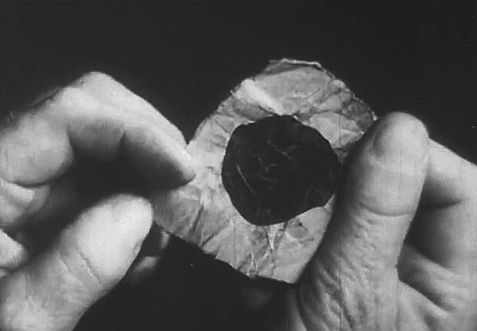
But Westerns were not the only shows we craved. Pirates were an enormous favorite as well. Captain Kidd, Blackbeard, Henry Morgan, were popular Hollywood fare for a buccaneer-hungry public.
Fictional Pirates
Ned Buntline and Zane Grey enthralled the young with action/adventure stories of the ‘Wild and Wooly West’. Robert Louis Stevenson gave us cowboys of the seas in his salty novel Treasure Island. Treasure Island features Long John Silver, the peg-leg buccaneer, and his band of misfits.
Included in the cast are every variety of low-life, including a messenger of doom, a blind man named Pugh. Early in Treasure Island, Pugh presses into Billy Bones’ hand a small slip of paper with an oversized ‘black spot’ smack dab in the middle. On the back of that paper is the time of the victim’s anticipated execution.
History of the Black Spot
So what is the history of the black spot? Does it date back umpteen centuries to some mystic religious rite or a band of thugs, cutthroats? No.
Robert Louis Stevenson simply dreamed up the black spot to add color to his novel. It is a complete fiction, a device. Today, fiction writers build a unique identity for their characters using literary devices. For instance, consider some famous fictional detectives,
- Sherlock Holmes has his tobacco-filled Persian slipper, his tireless need for the chase, his Watson.
- Miss Marple knits, talks, and tells yarns about people in her past life and their resemblance to persons of interest in her ongoing case.
- Nero Wolfe has a “thing” for remaining at home – eating gourmet foods and raising orchids.
- Columbo has his rundown Peugeot automobile, his wrinkled raincoat, and his irritating questions.
- Matlock craves eating hotdogs with the works.
- Barnaby Jones stands poised with his glass of milk.
But none of these characters comes close to Robert Louis Stevenson, his Treasure Island, and that blood-curdling little piece of paper we still associate with piracy, the black spot!
So, Then…
Thus Treasure Island and the black spot first appeared publicly in serial form during the years 1881 and 1882, released in book form during the year 1883, in the very same time period as the stories of the cowboys and the famous, even iconic, detectives.
So, will you sing with me?
Fifteen men on the dead man’s chest—
…Yo-ho-ho, and a bottle of rum!
Drink and the devil had done for the rest—
…Yo-ho-ho, and a bottle of rum!
Wasn’t that nice? Too bad it isn’t a genuine pirate ditty. It first appears, like the black spot, in Robert Louis Stevenson’s Treasure Island!